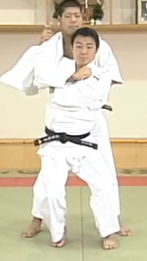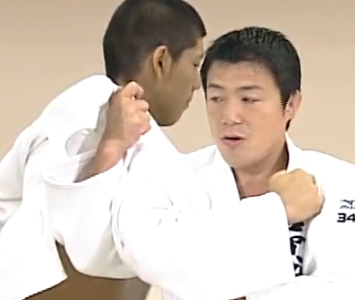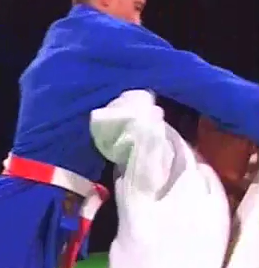Two of the commonly most confused throws are Seoi nage and Seoi otoshi, in particular this confusion arises amongst beginners who see a wide range of throws being referred to as ‘drop seoi nage’ and much fewer, but much more varied collection of throws referred to as seoi otoshi.
So let’s examine some common confusions
These are variously referred to as Seoi otoshi:
These as Seoi nage
And these as drop seoi nage
This proliferation of seemingly conflicting and disunified throws is further compounded by commentators branding various throws various names in the heat of the moment and then having that split second judgement treated as gospel or the enshrining of various techniques as such as such in grading syllabuses and becoming gospel.
Judo principles
However, the differences are relatively easily discernible if we apply simple Judo principles.
Is the throwing action effected by ‘nageru’ or ‘otosu’?
If the throwing action is effected by ‘nageru’ then it must involve an element of projection by tori.
If the throwing action is effected by ‘otosu’ then it must involve an element of dropping by tori.
Terminology reference
In the case of Seoi nage vs Seoi otoshi, however, we must dive in a little further and explore some of the ancilliary terms.
The most prominent of which is ‘seoi’. Seoi in Japanese means ‘to load onto the back’, thus a Seoi nage or Seoi otoshi must involve an element of loading of uke onto tori’s back.
We can delve deeper still, into the positioning of tori’s arms.
If tori’s arm is clamped under and around uke’s shoulder joint the grip is described as ‘ippon’
If tori’s arm is gripping uke’s lapel and the elbow is inserted into uke’s armpit the grip is described as ‘morote’.
Seoi Nage
So by the application of Judo principles and an awareness of the terminology we can understand that a throw is a Seoi nage, when it involves the loading of uke onto tori’s back, accompanied by either an ippon or morote grip and then the throwing action effected by the projection of uke.
Seoi Otoshi
So by the application of Judo principles and an awareness of the terminology we can understand that a throw is a Seoi otoshi, when it involves the loading of uke onto tori’s back, accompanied by either an ippon or morote grip and then the throwing action effected by the dropping of tori.
Common confusions
The main source of confusion comes from coaches and commentators whereby both Seoi otoshi and Seoi nage are refered to as ‘drop seoi nage’.
The confusion, commonly, arises during a dynamic situation where tori drops down to their knees and then springs back up to complete the throw. As tori has dropped many people assume it to be a ‘Seoi otoshi’, however, as tori springs back and up and effects the throwing action by sprining back up and projecting uke it is ‘Seoi nage’.
The other common source of confusion comes from grading syllabuses like the BJA’s describing Seoi nage as Seoi otoshi.
The BJA and many other syllabuses consider this to be Seoi otoshi:
Whereas it is an application of Seoi nage, in particular, Morote seoi nage. As uke is loaded onto the back and the throw effected by projecting uke, rather than tori’s body dropping.
Further confusion is created by coaches drawing artificial distinctions between Seoi otoshi and ‘drop seoi nage’ depending on whether one or two knees is touching the mat.
Whether one knee or two is touching the mat is irrelevant as I have mentioned above it is how the throw is effected that distinguishes ‘Otoshi’ from ‘Nage’.
This is such a problem that the Kodokan has gone to the length of special creating some English webpages to correct the issue, they can be found here:









Wow, that was an awesome breakdown of the nage and otoshi judo throws. I've been wanting to learn more about the finer aspects of judo and integrate it into my mma training. Thanks for the info.
ReplyDeleteBrilliant explaination! Thanks a bunch for sharing.
ReplyDeleteMany of the images are broken :(
ReplyDelete